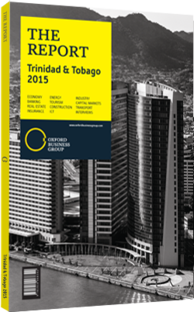Larry Howai, Minister of Finance and the Economy: Interview

Interview: Larry Howai
What effects does the Ministry of Finance expect oil and gas prices will have on state revenues?
LARRY HOWAI: In the short term we expect hydrocarbons price volatility to have two main effects on revenue. First, we project that prices will remain relatively soft for two to three years, which will particularly affect upstream revenues. However, while we expect the impact of low gas prices to be negligible for midstream operations, some additional losses might occur in 2015 from reduced downstream income.
Second, tax concessions that were made to oil and gas firms over the past three years will result in a projected 7.5% reduction of our total revenues. That being said, we also anticipate an upsurge of investment because of this tax incentive. Therefore, we see two to three years of soft prices but also an increase in production volume, which will gradually have a stabilising effect on government revenues.
We were projecting a balanced budget for 2015, but we expect 1-1.5% deficit in the coming two years. Starting in 2017, overall energy output should increase and some tax concessions will expire due to a sunset clause included in oil and gas agreements. Together with the growth of non-energy output, we foresee a strengthening of our fiscal position in the medium term. This ministry’s challenge is now to effectively balance the situation in the coming years without depressing growth.
How do you expect the planned non-energy investments to perform?
HOWAI: From 2009 to 2014 the GDP contribution from non-energy industries increased by TT$30bn ($4.6bn), with a percentage of that flowing into government revenues by way of taxes. Going forward, we expect further increases in revenue coming from non-energy sectors to be nominal, as a result of the reduction of some government expenditures over the same period.
The segment from which the greatest amount of revenue growth is likely to come is the financial sector. The Trinidad and Tobago International Financial Censome $700m in additional government revenue by 2020 from the initiatives they are putting in place. As a result of the fiscal incentives that were established in 2014, the manufacturing sector is also well positionedto provide a growing source of revenue. For instance, we have increased the capitalisation of the Export-Import Bank of Trinidad and Tobago to allow them to lend to manufacturers exporting outside of the region at a 2% interest rate, compared to the rates in excess of 7% offered by commercial banks.
In terms of the fiscal budget, we need to allow some time for the build-up of these investments and therefore we have not made significant changes to our non-energy revenue base for the time being.
To what extent is there a need for a more aggressive privatisation programme?
HOWAI: While the government does not have a privatisation agenda, we have identified six companies in which we would like to have strategic partners involved, including National Flour Mills, the Point Lisas Industrial Port Development Company, National Helicopter Services and the Vehicle Management Corporation, in addition to others. We have already begun working with the regional credit ratings agency CariCRIS to build out capacity and eventually identify strategic partners for these firms. This agenda will be pursued over the course of the next two years.
Broadly speaking, there are several areas where the government has played a catalytic role, but the final objective is always for the private sector to carry forward. For instance, this is expected to happen in our nascent compressed natural gas industry and its filling stations. We are targeting after-tax rates of return that are attractive to investors. Once we go over that initial hump and begin reducing fuel subsidies, we can move some of that investment into the private sector’s hands. In the case of Petrotrin, we do not plan to transition that company to the private sector at this time.
You have reached the limit of premium articles you can view for free.
Choose from the options below to purchase print or digital editions of our Reports. You can also purchase a website subscription giving you unlimited access to all of our Reports online for 12 months.
If you have already purchased this Report or have a website subscription, please login to continue.

